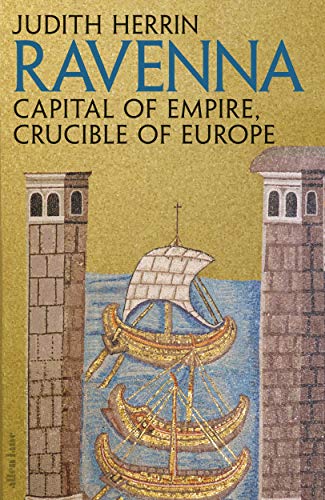Items related to Ravenna: Capital of Empire, Crucible of Europe

At the end of the fourth century, as the power of Rome slowly faded and Constantinople was established as the capital of the Roman Empire in the east, a new city was rising in the west. In 402 the western Emperor Honorius settled in what was then a small but well defended provincial city on the Adriatic coast. This town was Ravenna, and it was to be home to the rulers of what remained of the western empire until it fell to the Lombards in 751.
Successive emperors filled Ravenna with exceedingly impressive secular and ecclesiastical buildings (many of them still standing) and the imperial court attracted scholars, teachers, lawyers, inventors, craftsmen and spiritual leaders. For over three centuries it (rather than Rome) became the meeting place of Greek, Latin, Christian and barbarian cultures, and played a critical role in the development of a medieval European identity.
Yet the city at this remarkable period has never benefited from an authoritative and accessible history. Judith Herrin's book explains what made Ravenna such a brilliant and vital centre during the fifth to eighth centuries. Readers unfamiliar with the audacious world of Late Antiquity will find the book a compelling introduction to the period, while those who know it will find it brought to life in the history of a single city.
"synopsis" may belong to another edition of this title.
Others in recent years have made worthy efforts to interest us in the Byzantine achievement, but none has made it live in quite the way that Herrin does ... Free from portentousness and pretentiousness, she doesn't insist on her subject's importance or relevance: the freshness and enthusiasm of her book is its real point. Not just an important work of scholarship but a delight to read, this study works a minor miracle in raising Byzantium, Lazarus-like, from its dusty grave. (Michael Kerrigan Scotsman)
She presents Byzantium as a vibrant, dynamic, cosmopolitan reality which somehow escaped the constraints of its official ideology (Economist)
"About this title" may belong to another edition of this title.
- PublisherAllen Lane
- Publication date2020
- ISBN 10 1846144663
- ISBN 13 9781846144660
- BindingHardcover
- Edition number1
- Number of pages576
- Rating
Buy New
Learn more about this copy
Shipping:
£ 3.45
Within U.S.A.
Top Search Results from the AbeBooks Marketplace
RAVENNA CAPITAL OF EMPIRE CRUCIBLE OF EUROPE /ANGLAIS (ALLEN LANE)
Book Description Condition: new. Seller Inventory # FrontCover1846144663
RAVENNA CAPITAL OF EMPIRE CRUCIBLE OF EUROPE /ANGLAIS (ALLEN LANE)
Book Description Hardcover. Condition: new. New. Seller Inventory # Wizard1846144663
RAVENNA CAPITAL OF EMPIRE CRUCIBLE OF EUROPE /ANGLAIS (ALLEN LANE)
Book Description Hardcover. Condition: new. New. Fast Shipping and good customer service. Seller Inventory # Holz_New_1846144663
RAVENNA CAPITAL OF EMPIRE CRUCIBLE OF EUROPE /ANGLAIS (ALLEN LANE)
Book Description Hardcover. Condition: new. New Copy. Customer Service Guaranteed. Seller Inventory # think1846144663

